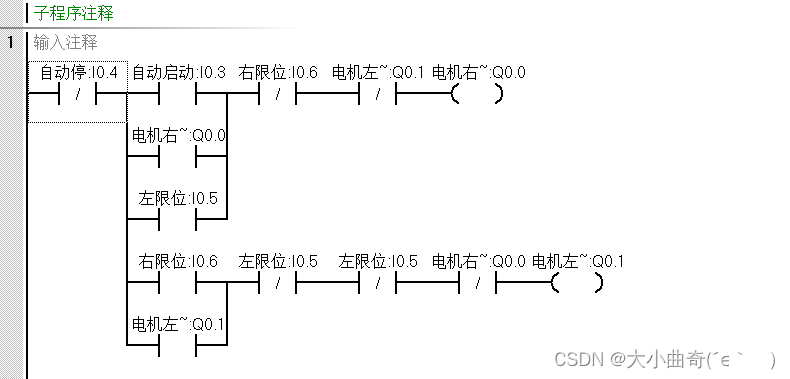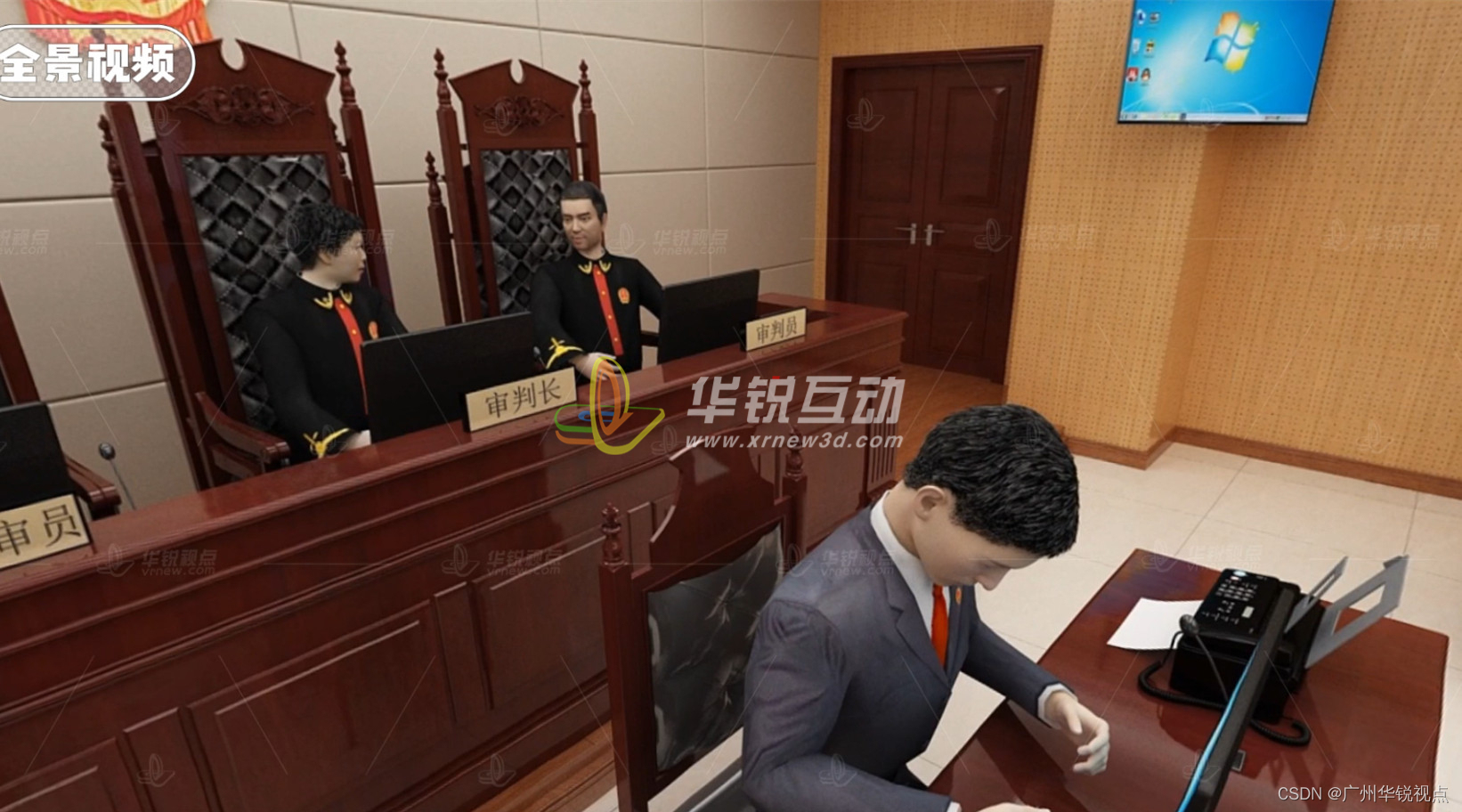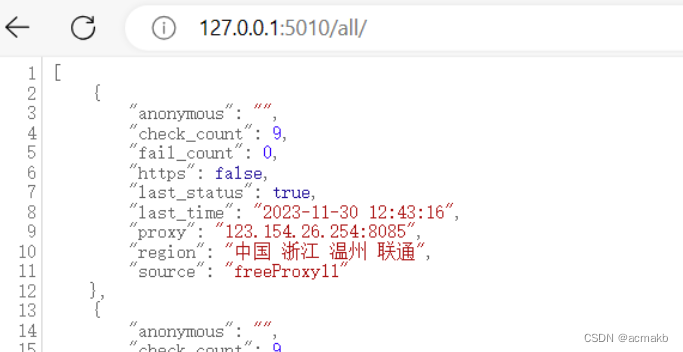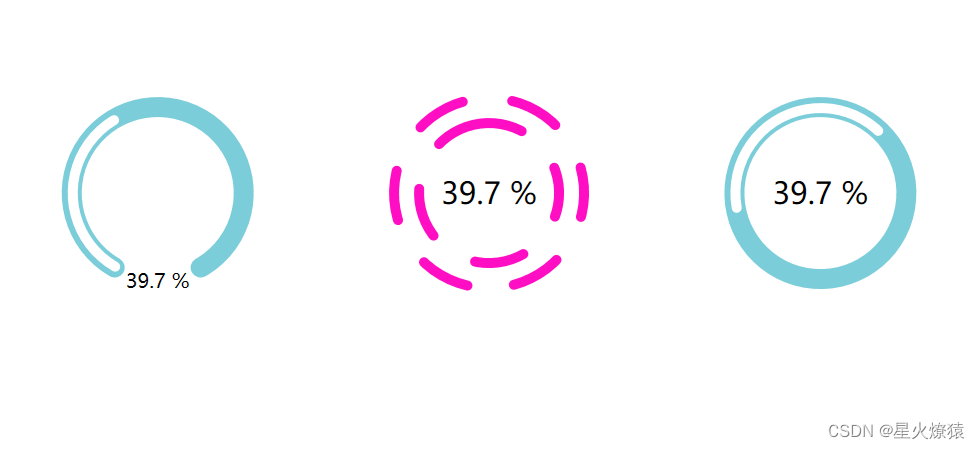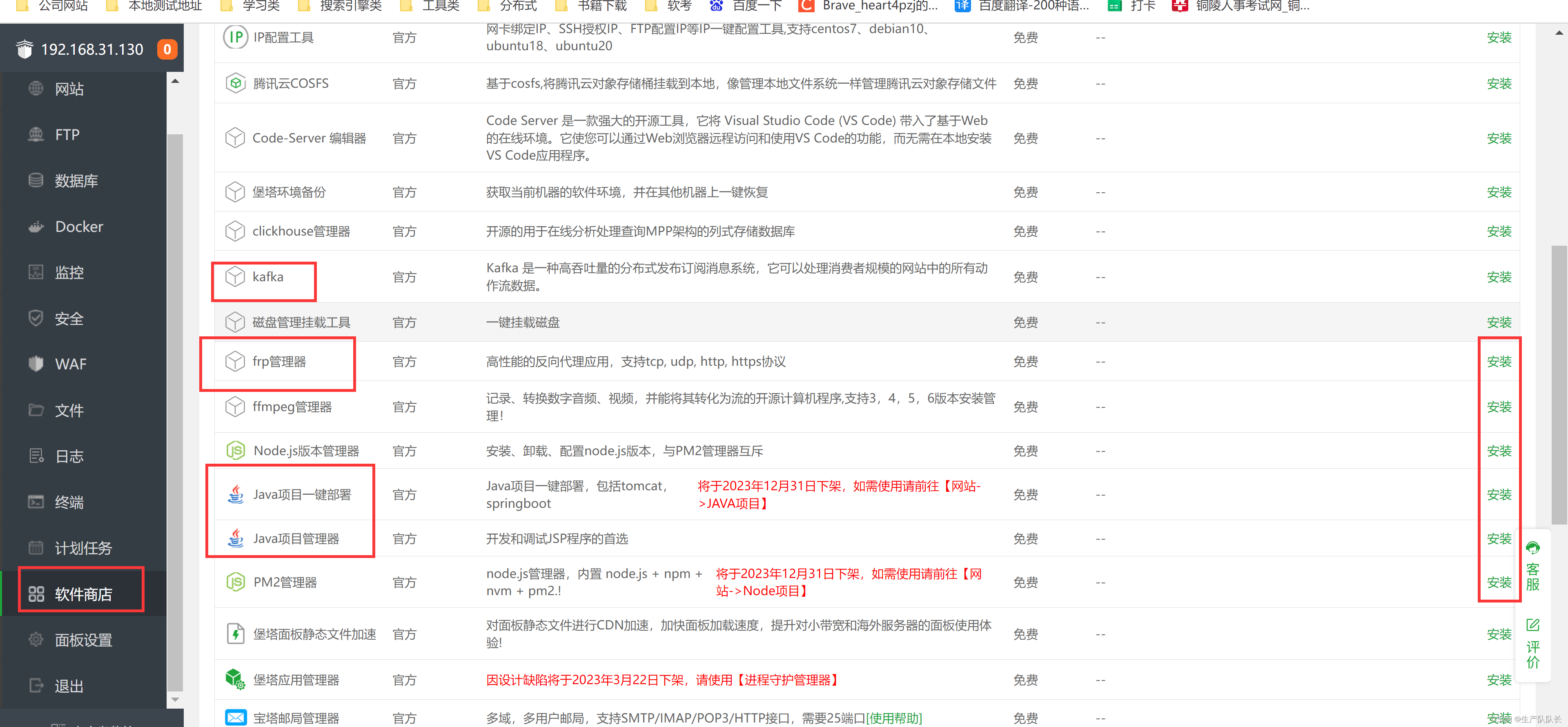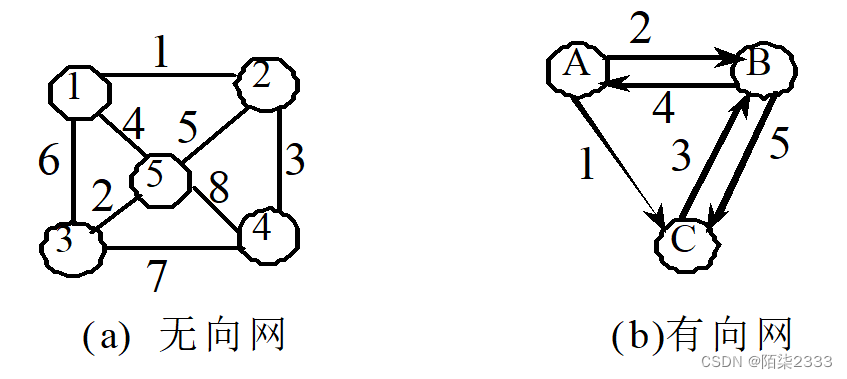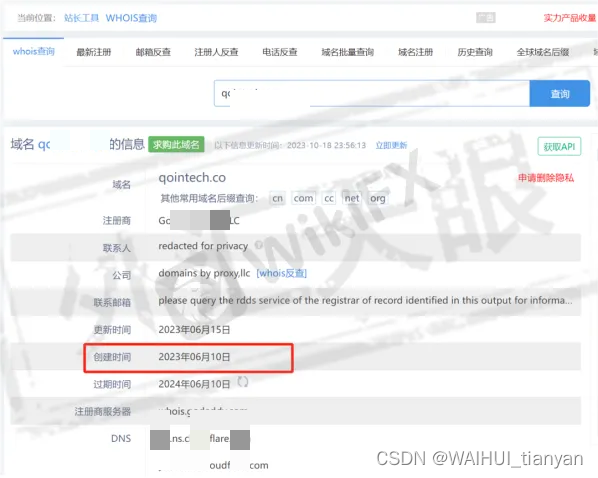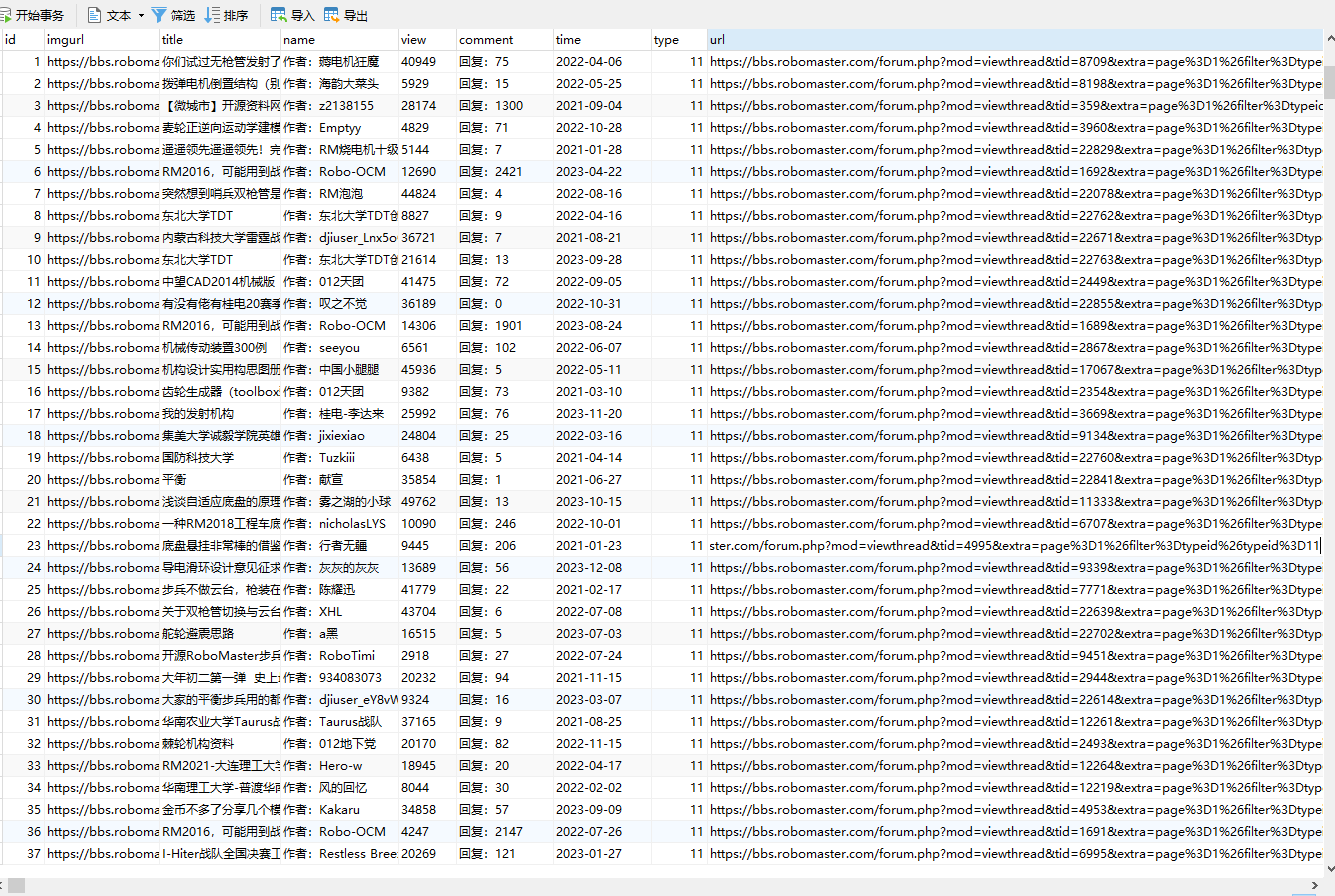前言
本文展示论文《基于自适应哈夫曼编码的密文可逆信息隐藏算法》的复现代码。代码块的结构如下:
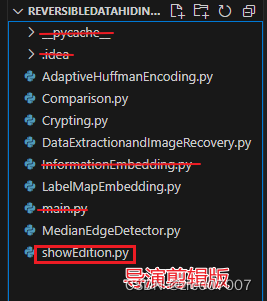
其中,每个代码块都包含了测试该代码块的功能的主函数代码,使用时可放心运行,前提是你按照这个包结构把文件命名改好,放在同一个文件夹下放好。.idea和__pycache__文件不用管。还有main.py、InformationEmbedding.py也是多余的文件。
论文内容解析请参考本人的这篇文章:
论文简述基于自适应哈夫曼编码的密文可逆信息隐藏算法(基于位图压缩的加密图像可逆信息隐藏算法)_zrc007007的博客-CSDN博客
精简版代码在这里:
论文复现代码《基于自适应哈夫曼编码的密文可逆信息隐藏算法》导演剪辑版-CSDN博客
复现代码
MedianEdgeDetector.py
首先是中值预测器,文件名为MedianEdgeDetector.py:
import numpy as np
class MED:
def __init__(self):
# 示例数据
self.data = [
[162, 162, 162, 161, 162, 157, 163, 161],
[162, 162, 162, 161, 162, 157, 163, 161],
[162, 162, 162, 161, 162, 157, 163, 161],
[162, 162, 162, 161, 162, 157, 163, 161],
[162, 162, 162, 161, 162, 157, 163, 161],
[164, 164, 158, 155, 161, 159, 159, 160],
[160, 160, 163, 158, 160, 162, 159, 156],
[159, 159, 155, 157, 158, 159, 156, 157]
]
def detect(self, data):
# 中值预测
result = np.zeros_like(data)
result[0][0] = data[0][0]
for i in range(1, len(data)):
result[i][0] = data[i][0]
result[0][i] = data[0][i]
for i in range(1, len(data)):
for j in range(1, len(data[0])):
a = data[i - 1][j - 1]
b = data[i - 1][j]
c = data[i][j - 1]
if a <= min(b, c):
result[i][j] = max(b, c)
elif a >= max(b, c):
result[i][j] = min(b, c)
else:
result[i][j] = b + c - a
return result
if __name__ == "__main__":
print(MED().detect(MED().data))
AdaptiveHuffmanEncoding.py
对图像进行自适应哈夫曼编码,文件名为AdaptiveHuffmanEncoding.py:
from MedianEdgeDetector import MED
import numpy as np
from math import inf
class HuffCode:
def compare(self, num1, num2):
# 比较像素值的相同比特位数
count = 0
for i in range(8):
divisor = pow(2, 7-i)
if int(num1 // divisor) == int(num2 // divisor):
count += 1
num1 = num1 - divisor
num2 = num2 - divisor
else:
break
return count
def count(self, origindata, data):
# 生成图像相同像素值的比特位数的比较结果
result = {}
resultMap = np.zeros_like(data)
resultMap[0][0] = -1
for i in range(1, len(data)):
resultMap[i][0] = -1
resultMap[0][i] = -1
for i in range(1, len(data)):
for j in range(1, len(data[0])):
num = self.compare(origindata[i][j], data[i][j])
resultMap[i][j] = num
result[num] = result.get(num, 0) + 1
return resultMap, result
# 初始化哈夫曼结点
class Huffmannode(object):
def __init__(self):
self.parent=0
self.left=0
self.right=0
self.weight=0
# 选择最小的结点下标
def select_node(huffman):
# 俩个结点直接返回不需要找最小俩个结点
if len(huffman)==2:
return 0,1
min=semin=inf# 初始化成无穷大
f=s=-1
for i in range(len(huffman)):
if huffman[i].parent==0:
if min>huffman[i].weight:
semin=min
s=f
min=huffman[i].weight
f=i
elif semin>huffman[i].weight:
semin=huffman[i].weight
s=i
return f,s
# 编码
def Huffman_code(origin_dict):
# 给结点赋权重
n=len(origin_dict)
m=2*n-1
huffman=[]
for i in origin_dict:
temp_huffmannode=Huffmannode()
temp_huffmannode.weight=origin_dict[i]
huffman.append(temp_huffmannode)
# 构建Huffman树,选择俩个最小的结点合并
for i in range(n,m):
f,s=select_node(huffman)
temp_huffmannode=Huffmannode()
temp_huffmannode.weight=huffman[f].weight+huffman[s].weight
temp_huffmannode.right=f # 小的放在右边
temp_huffmannode.left=s
huffman[f].parent=huffman[s].parent=i
huffman.append(temp_huffmannode)
# 0,1编码,右0,左1
codeing_dict = dict.fromkeys(origin_dict, None)
for i in range(0,n):
s=''
k=i
parent=huffman[i].parent
while parent!=0:
if huffman[parent].left==k:
s+='1'
k=parent
parent=huffman[parent].parent
else:
s+='0'
k=parent
parent=huffman[parent].parent
codeing_dict[list(origin_dict.keys())[i]]=list(reversed(s))
for k in codeing_dict.items():
codeing_dict[k[0]] = ''.join(k[1])
return codeing_dict
if __name__ == "__main__":
MED = MED()
origindata = MED.data
MEDdata = MED.detect(origindata)
print(np.array(origindata))
print(MEDdata)
print(HuffCode().compare(159, 160))
resultMap, result = HuffCode().count(origindata, MEDdata)
print(result)
'''
# 输入原始字符集
s = input('输入即将被编码的字符:')
# 创建字典计算频率
dic = {}
for i in range(len(s)):
# get方法,如果有键返回该键对应的值,如果没键,可以设置返回值
dic[s[i]] = dic.get(s[i], 0) + 1
'''
code_dict = Huffman_code(result)
print(code_dict)
Crypting.py
混沌矩阵加密,文件名为Crypting.py:
import numpy as np
from skimage import io
import matplotlib.pyplot as plt
def crypt(im, miu, x0):
'''
logistic混沌加密
:param im: 图像
:param miu: μ参数
:param x0: x0参数
:return: 返回密文图像
'''
h, w = im.shape
c_ = np.zeros_like(im)
c_[0][0] = x0
c=[]
c.append(x0)
result = np.zeros_like(im)
result[0][0] = (x0 * pow(2, 48)) % 256
for x in range(1, h * w):
i = x // w
j = x % w
c.append(miu * c[x - 1] * (1 - c[x - 1]))
c_[i][j] = (c[x] * pow(2, 48)) % 256
for i in range(h):
for j in range(w):
result[i][j] = im[i][j] ^ c_[i][j]
return result
def transform(img):
column, row = img.shape
result = np.zeros_like(img, dtype='int_')
for i in range(column):
for j in range(row):
result[i][j] = int(img[i][j] * 255)
return result
if __name__ == "__main__":
plt.set_cmap(cmap='gray')
img = io.imread("../img/lena_grey.tif")
print(img)
plt.imshow(img)
img = transform(img)
print(img)
plt.figure()
enc_img = crypt(img, 3.6, 0.5)
plt.imshow(enc_img)
plt.figure()
dec_img = crypt(enc_img, 3.6, 0.5)
plt.imshow(dec_img)
plt.show()LabelMapEmbedding.py
位图嵌入,文件名LabelMapEmbedding.py:
import numpy as np
import math
from AdaptiveHuffmanEncoding import *
from Crypting import *
# from MedianEdgeDetector import *
def int2bin(num, leng):
'''
整数int转二进制格式bin
Transform a integer to a string whose length is leng.
:param num: numbers waiting for transforming
:param leng: the length of hoped result string
:return: a string of leng length
'''
if leng < 1:
raise Exception("Length isn't positive integer!")
place = 1
result = ''
while place <= leng:
result = str(num % 2) + result
num = num // 2
if num == 0:
return (leng - place) * '0' + result
place += 1
raise Exception("Length of binary string isn't enough!")
def bin2int(string, leng):
'''
二进制格式bin转整数int
Transfer a string of length of leng to a positive integer
:param string: string waiting to be transferred
:param leng: the length of reading
:return: a positive integer less than 2^leng
'''
if leng < 1:
raise Exception("Length isn't positive integer!")
if len(string) < leng:
raise Exception("Length of string under transferring isn't enough!")
place = 1
result = 0
while place <= leng:
result += int(string[place - 1]) * pow(2, leng - place)
place += 1
return result
def binstrcomplmt(string, length, complement):
'''
给二进制格式补位,补到前面。比如补0就给complement传0,补1就传1
Complement strings with which we decide.
:param string: string waiting to be complemented
:param length: what we hope it to length
:param complement: using what character to complement it
:return: string already complemented
'''
return (length - len(string)) * complement + string
def binstrbackcomplmt(string, length, complement):
'''
给二进制格式补位,补到后面
Complement strings with which we decide on its backhand.
:param string: string waiting to be complemented
:param length: what we hope it to length
:param complement: using what character to complement it
:return: string already complemented
'''
return string + (length - len(string)) * complement
def generatec(dict):
'''
生成嵌入信息中的c1到c8
generate c info
:param dict: Huffman code diction
:return:
'''
result = ''
c = []
for i in range(9):
c.append(0)
c[i] = len(dict.get(i, ''))
result += int2bin(c[i], 4)
print(c)
return result
def generateh(dict):
'''
生成嵌入信息中的h1到h8
generate h info
:param dict: Huffman code diction
:return:
'''
result = ''
h = []
for i in range(9):
h.append('')
h[i] = binstrcomplmt(dict.get(i, '0'), 8, '0')
result += h[i]
print(h)
return result
def countLm(countDict, lenDict):
'''
生成论文中说的Lm,变成Eta还需要转换一下
Counting Lm
:param countDict: diction of Huffman codes' appearance
:param lenDict: Huffman code diction
:return:
'''
count = 0
for i in range(9):
count += countDict.get(i, 0) * len(lenDict.get(i, ''))
return count
def generatef(Lm, shapeOfImg):
'''
生成嵌入信息中的f
generate f, which is Lm's bits' num's binary format
:param Lm:
:param shapeOfImg:
:return:
'''
return int2bin(Lm, math.ceil(np.log2(shapeOfImg[0])) + math.ceil(np.log2(shapeOfImg[1])) + 2)
def generateEta(dic, labelmap):
'''
生成嵌入信息中的Eta
Transferred label map's binary format
:param dic:
:param labelmap:
:return:
'''
result = ''
for i in range(1, labelmap.shape[0]):
for j in range(1, labelmap.shape[1]):
result += dic[labelmap[i][j]]
return result
def generatelabelinfo(HuffDict, CountDict, LabelMap):
'''
生成总的嵌入信息
Generate embedding information of label map
:param HuffDict: Huffman code diction
:param CountDict: Length of Huffman codes' diction
:param LabelMap: The label map
:return: Embedding information of label map
'''
return generatec(HuffDict) + generateh(HuffDict) + generatef(countLm(CountDict,HuffDict), LabelMap.shape)\
+ generateEta(HuffDict, LabelMap)
def embedinfo(LabelInfo, EncryptedImg, LabelMap, data):
# 嵌入位图信息
ReferencePixels = ''
result = np.array(EncryptedImg)
for i in range(EncryptedImg.shape[0]):
ReferencePixels += int2bin(EncryptedImg[0][i], 8)
result[0][i] = bin2int(LabelInfo, 8)
LabelInfo = LabelInfo[8:] # 截掉8个
for i in range(1, EncryptedImg.shape[1]):
ReferencePixels += int2bin(EncryptedImg[i][0], 8)
result[i][0] = bin2int(LabelInfo, 8)
LabelInfo = LabelInfo[8:]
EmbeddingInfo = LabelInfo + ReferencePixels + data
print("Length of Reference Pixels is:", len(ReferencePixels))
count = 0
row = count // (EncryptedImg.shape[1] - 1) + 1
column = count % (EncryptedImg.shape[1] - 1) + 1
t = LabelMap[row][column]
maximum = (EncryptedImg.shape[0] - 1) * (EncryptedImg.shape[1] - 1)
while len(EmbeddingInfo) > 0:
if 0 <= t <= 6:
result[row][column] = EncryptedImg[row][column] % pow(2, 7 - t)\
+ bin2int(binstrbackcomplmt(EmbeddingInfo[:t+1], 8, '0'), 8)
EmbeddingInfo = EmbeddingInfo[t+1:]
elif 7 <= t <= 8:
result[row][column] = bin2int(binstrbackcomplmt(EmbeddingInfo[:8], 8, '0'), 8)
EmbeddingInfo = EmbeddingInfo[8:]
count += 1
if count >= maximum:
raise Exception("There's no room for embedding!")
row = count // (EncryptedImg.shape[1] - 1) + 1
column = count % (EncryptedImg.shape[1] - 1) + 1
t = LabelMap[row][column]
return result
def detect(data):
'''
测试用预测函数
:param data:
:return:
'''
result = np.zeros_like(data)
result[0][0] = data[0][0]
for i in range(1, len(data)):
result[i][0] = data[i][0]
result[0][i] = data[0][i]
for i in range(1, len(data)):
for j in range(1, len(data[0])):
a = data[i - 1][j - 1]
b = data[i - 1][j]
c = data[i][j - 1]
if a <= min(b, c):
result[i][j] = max(b, c)
elif a >= max(b, c):
result[i][j] = min(b, c)
else:
result[i][j] = b + c - a
return result
if __name__ == "__main__":
print(128//2)
print(128%2)
strng = int2bin(1, 8)
print(strng)
print(bin2int(strng,8))
print(bin2int('1', 1))
MED = MED()
origindata = MED.data
origindata = np.array(origindata)
MEDdata = MED.detect(origindata)
print("The origin data is:")
print(np.array(origindata))
print("The predicted data is:")
print(MEDdata)
print(HuffCode().compare(159, 160))
resultMap, countingResult = HuffCode().count(origindata, MEDdata)
print("The label map is:")
print(resultMap)
print("The counting result of Huffman coding is:", countingResult)
'''
# 输入原始字符集
s = input('输入即将被编码的字符:')
# 创建字典计算频率
dic = {}
for i in range(len(s)):
# get方法,如果有键返回该键对应的值,如果没键,可以设置返回值
dic[s[i]] = dic.get(s[i], 0) + 1
'''
code_dict = Huffman_code(countingResult)
print(code_dict)
generatec(code_dict)
print(generatec(code_dict))
print(len(generatec(code_dict)))
print(generateh(code_dict), len(generateh(code_dict)))
lm = countLm(countingResult, code_dict)
print("Lm is:", lm)
f = generatef(lm, MEDdata.shape)
print("f is:", f)
print("length of f is:", len(f))
Eta = generateEta(code_dict, resultMap)
print("The length of Eta is:", len(Eta))
print("Eta is:")
print(Eta)
labelInfo = generatelabelinfo(code_dict,countingResult, resultMap)
print("The length of labelInfo is:", len(labelInfo))
print("Label info:")
print(labelInfo)
print("Is length of c, h, f and Eta equals to labelInfo:", len(generatec(code_dict)) + len(generateh(code_dict)) +\
len(f) + len(Eta) == len(labelInfo))
embedded = embedinfo(labelInfo, crypt(origindata, 3.6, 0.5), resultMap, '0110')
print(embedded)
strng = int2bin(903, 11)
print(strng)
print(strng[12:] == '')
print(strng[:3])
print(detect(origindata))
DataExtractionandImageRecovery.py
数据提取和恢复,文件名DataExtractionandImageRecovery.py:
from LabelMapEmbedding import *
from skimage import io
import matplotlib.pyplot as plt
def HuffDecode(HuffDict, info):
# 哈夫曼解码
for i in range(9):
if info[:len(HuffDict.get(i, ''))] == HuffDict.get(i, -1):
print("The i is:", i)
print(info[:8])
print(HuffDict)
return i, len(HuffDict[i])
raise Exception("No string matches!")
def extractpixel(pixel, t):
# 根据t值,恢复像素位数
if 0 <= t <= 7:
return int2bin(pixel, 8)[:t+1]
elif t == 8:
return int2bin(pixel, 8)
else:
raise Exception("T out of range!")
def calctcut(t):
# 根据t值,返回像素数
if 0 <= t <= 7:
return t + 1
elif t == 8:
return 8
else:
raise Exception("T out of range!")
def extract1(encrypted):
# 提取第一行、第一列
info = ''
LenDict = {}
HuffDict = {}
for i in range(encrypted.shape[0]):
info += int2bin(encrypted[0][i], 8)
for i in range(1, encrypted.shape[1]):
info += int2bin(encrypted[i][0], 8)
for i in range(9):
LenDict[i] = bin2int(info[:4], 4)
info = info[4:]
for i in range(9):
if LenDict[i] != 0:
HuffDict[i] = info[8-LenDict[i]:8]
info = info[8:]
print(LenDict, HuffDict)
return HuffDict, info
def extract_exp(encrypted, HuffDict, info, datalen, Label): # Label是用来测试位图和算出来的是不是一样的,可以删掉
# 提取位图
LabelMap = np.zeros_like(encrypted)
decrypted1 = np.array(encrypted)
LmLen = math.ceil(np.log2(encrypted.shape[0])) + math.ceil(np.log2(encrypted.shape[1])) + 2
Lm = bin2int(info[:LmLen], LmLen)
info = info[LmLen:]
infoLen = Lm + ((encrypted.shape[0] - 1) + (encrypted.shape[1] - 1) - 1) * 8 + datalen
count = len(info) # 已提取到的信息长度
place = 0
pursuit = 0
gonext = 0
count1 = 1
while count < infoLen:
print("count:", count)
print("Info len:", infoLen)
print("pursuit:", pursuit)
row = place // (encrypted.shape[1] - 1) + 1
column = place % (encrypted.shape[1] - 1) + 1
print("origin row, column:", row, column)
if count1 == 1 and count < Lm:
t, CodeLen = HuffDecode(HuffDict, info)
print("t is:", t)
LabelMap[row][column] = t
info = info[CodeLen:] + extractpixel(encrypted[row][column], t)
count += calctcut(t)
place += 1
print("step1")
print("Is the Label Map equal to the extrated one:", Label[row][column] == t)
print("place is:", place)
print("count is:", count)
else:
pursuit = 1
count1 = 0
if pursuit == 1 and gonext == 0:
record = place
print("\nThe staring of step 2's row and column is:\n", row , column)
while place < (encrypted.shape[0] - 1) * (encrypted.shape[1] - 1):
row = place // (encrypted.shape[1] - 1) + 1
column = place % (encrypted.shape[1] - 1) + 1
t, CodeLen = HuffDecode(HuffDict, info)
LabelMap[row][column] = t
info = info[CodeLen:] + extractpixel(encrypted[row][column], t)
print("step2")
print("Is the Label Map equal to the extrated one:", Label[row][column] == t)
print("T is {}, and the Label is {}".format(t, Label[row][column]))
print("place:", place)
print("row, column:", row, column)
place += 1
print('haha',place)
print("end")
place = record
row = place // (encrypted.shape[1] - 1) + 1
column = place % (encrypted.shape[1] - 1) + 1
gonext = 1
if gonext == 1 and count - Lm < (encrypted.shape[0] - 1) * (encrypted.shape[1] - 1) * 8 + datalen:
# print("place:",place)
# print("row, column:", row, column)
info += extractpixel(encrypted[row][column], LabelMap[row][column])
count += calctcut(LabelMap[row][column])
# print("infolen:", infoLen)
# print("count:", count)
# print()
place += 1
for i in range(encrypted.shape[0]):
LabelMap[0][i] = -1
decrypted1[0][i] = bin2int(info[:8], 8)
info = info[8:]
for i in range(1, encrypted.shape[1]):
LabelMap[i][0] = -1
decrypted1[i][0] = bin2int(info[:8], 8)
info = info[8:]
data = info[:datalen]
return LabelMap, decrypted1, data
def reverse(char):
# 反转0和1
if char == '0':
return '1'
elif char == '1':
return '0'
else:
raise Exception("Not 0 or 1!")
def detect(data, i, j):
'''
测试用预测函数
:param data:
:return:
'''
a = data[i - 1][j - 1]
b = data[i - 1][j]
c = data[i][j - 1]
if a <= min(b, c):
result = max(b, c)
elif a >= max(b, c):
result = min(b, c)
else:
result = b + c - a
return result
def recovery(img, LabelMap):
# 恢复图像
result = np.zeros_like(img)
for i in range(img.shape[0]):
result[0][i] = img[0][i]
for i in range(1, img.shape[1]):
result[i][0] = img[i][0]
for i in range(1, img.shape[0]):
for j in range(1, img.shape[1]):
px = detect(result, i, j)
t = LabelMap[i][j]
if t == 8:
result[i][j] = px
elif 0 <= t <= 7:
result[i][j] = bin2int(int2bin(px, 8)[:t] + '0' * (8 - t), 8)\
+ int(reverse(int2bin(px, 8)[t:t+1])) * pow(2, 7 - t) + img[i][j] % pow(2, 7 - t)
else:
raise Exception("T out of range!")
return result
if __name__ == "__main__":
MED = MED()
# origindata = MED.data
origindata = io.imread("../img/lena_grey.tif")
origindata = transform(origindata)
origindata = np.array(origindata)
MEDdata = MED.detect(origindata)
print("The origin data is:")
print(np.array(origindata))
print("The predicted data is:")
print(MEDdata)
print(HuffCode().compare(159, 160))
resultMap, countingResult = HuffCode().count(origindata, MEDdata)
print("The label map is:")
print(resultMap)
print("The counting result of Huffman coding is:", countingResult)
code_dict = Huffman_code(countingResult)
print(code_dict)
generatec(code_dict)
print(generatec(code_dict))
print(len(generatec(code_dict)))
print(generateh(code_dict), len(generateh(code_dict)))
lm = countLm(countingResult, code_dict)
print("Lm is:", lm)
f = generatef(lm, MEDdata.shape)
print("f is:", f)
print("length of f is:", len(f))
Eta = generateEta(code_dict, resultMap)
print("The length of Eta is:", len(Eta))
print("Eta is:")
print(Eta)
labelInfo = generatelabelinfo(code_dict,countingResult, resultMap)
print("The length of labelInfo is:", len(labelInfo))
print("Label info:")
print(labelInfo)
secret = '0110010000' * 50 # 用于测试的秘密信息
embedded = embedinfo(labelInfo, crypt(origindata, 3.6, 0.5), resultMap, secret) # 嵌入秘密信息
print(embedded)
huff_code, info1 = extract1(embedded)
print("The length of rest of info waiting for extracting is:", len(info1))
print(int2bin(100, 8))
print(extractpixel(100, 0))
# resultMap2, decrypted1, data= extract2(embedded, huff_code, info1, 4)
resultMap2, decrypted1, data = extract_exp(embedded, huff_code, info1, len(secret), resultMap)
print("The encrypted img is:\n", crypt(origindata, 3.6, 0.5))
print("The decrypted1 img is:\n", decrypted1)
print(resultMap2)
print(resultMap)
print(data)
if secret == data:
print("THE extract is successful!")
img1 = crypt(decrypted1, 3.6, 0.5)
print("img1 is:\n",img1)
'''
print("Origin:")
print(origindata)
print("Detect img:")
print(detect(img1))
print("Detected origin data:")
print(detect(origindata))
'''
res = img1 - origindata
print("result compare with origin data:\n")
print(res)
img2 = recovery(img1, resultMap2)
print(img2)
res = img2 - origindata
print("img2 compares to origin:\n", res)
plt.set_cmap(cmap='gray')
plt.subplot(221)
plt.imshow(origindata)
plt.title("Origin imagery")
plt.subplot(222)
plt.imshow(embedded)
plt.title("Embedded imagery")
plt.subplot(223)
plt.imshow(img1)
plt.title("Preliminary decrypted imagine")
plt.subplot(224)
plt.imshow(img2)
plt.title("Fully recovered imagine")
plt.show()
Comparison.py
计算指标,比较结果,文件名Comparison.py:
import numpy as np
import math
import cv2
from DataExtractionandImageRecovery import *
from skimage.color import rgb2gray
def ssim(img1, img2):
#计算ssim指标
C1 = (0.01 * 255)**2
C2 = (0.03 * 255)**2
img1 = img1.astype(np.float64)
img2 = img2.astype(np.float64)
kernel = cv2.getGaussianKernel(11, 1.5)
window = np.outer(kernel, kernel.transpose())
mu1 = cv2.filter2D(img1, -1, window)[5:-5, 5:-5] # valid
mu2 = cv2.filter2D(img2, -1, window)[5:-5, 5:-5]
mu1_sq = mu1**2
mu2_sq = mu2**2
mu1_mu2 = mu1 * mu2
sigma1_sq = cv2.filter2D(img1**2, -1, window)[5:-5, 5:-5] - mu1_sq
sigma2_sq = cv2.filter2D(img2**2, -1, window)[5:-5, 5:-5] - mu2_sq
sigma12 = cv2.filter2D(img1 * img2, -1, window)[5:-5, 5:-5] - mu1_mu2
ssim_map = ((2 * mu1_mu2 + C1) * (2 * sigma12 + C2)) / ((mu1_sq + mu2_sq + C1) *
(sigma1_sq + sigma2_sq + C2))
return ssim_map.mean()
def psnr(img1, img2):
# 计算PSNR指标
mse = np.mean( (img1/255. - img2/255.) ** 2 )
if mse < 1.0e-10:
return 100
PIXEL_MAX = 1
return 20 * math.log10(PIXEL_MAX / math.sqrt(mse))
if __name__ == "__main__":
MED = MED()
# Baboon 3.6 0.5
origindata = io.imread("../img/lena_gray_512.tif")
# origindata = rgb2gray(origindata)
print(origindata)
# origindata = transform(origindata)
origindata = np.array(origindata)
MEDdata = MED.detect(origindata)
resultMap, countingResult = HuffCode().count(origindata, MEDdata)
code_dict = Huffman_code(countingResult)
labelInfo = generatelabelinfo(code_dict, countingResult, resultMap)
encrypted = crypt(origindata, 3.7, 0.9)
containingLabel = embedinfo(labelInfo, encrypted, resultMap, '')
embedded = embedinfo(labelInfo, encrypted, resultMap, '0110010000')
huff_code, info1 = extract1(embedded)
# resultMap2, decrypted1, data = extract_exp(embedded, huff_code, info1, 10, resultMap)
# img1 = crypt(decrypted1, 3.6, 0.5)
print("Lena")
print("Comparison of PSNR and SSIM between encrypted imagine and the original:")
print("PSNR:", psnr(origindata, encrypted))
print("SSIM:", ssim(origindata, encrypted))
print()
print("Comparison of PSNR and SSIM between containing Label Map imagine and the original:")
print("PSNR:", psnr(origindata, containingLabel))
print("SSIM:", ssim(origindata, containingLabel))
print()
print("Comparison of PSNR and SSIM between embedded imagine and the original:")
print("(With the secret of '0110010000')")
print("PSNR:", psnr(origindata, embedded))
print("SSIM:", ssim(origindata, embedded))



